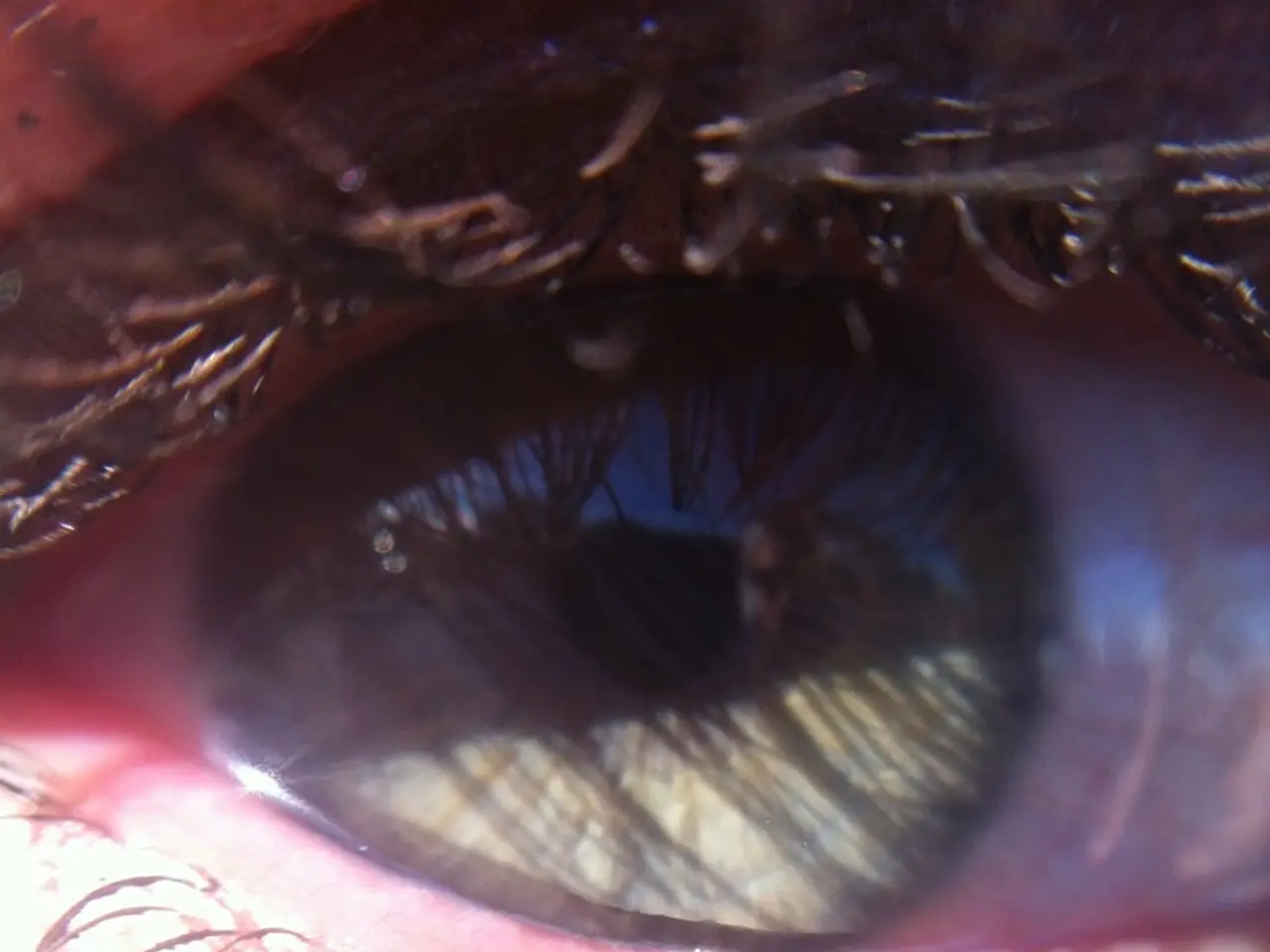Therapeutic Comparison: Art Therapy versus Eye Movement Desensitization and Reprocessing (EMDR) - Choosing the Best Fit
In the world of psychotherapy, two innovative approaches have emerged as effective treatments for trauma and Post-Traumatic Stress Disorder (PTSD): Accelerated Resolution Therapy (ART) and Eye Movement Desensitization and Reprocessing (EMDR). These therapies, while sharing a common goal, differ significantly in their techniques, session structure, benefits, and focus of therapy.
ART, a relatively new form of psychotherapy developed in the early 2000s, uses guided eye movements to alter distressing memories quickly without extensive verbal processing. The therapy involves a structured step-by-step process where the patient visualizes a troubling memory and then replaces its emotional content by imagining a positive ending. This method combines elements from Cognitive Behavioural Therapy (CBT) and EMDR. In contrast, EMDR, developed in the late 1980s, is a well-established and well-studied form of psychotherapy that combines trauma recall with bilateral stimulation to reprocess and integrate traumatic memories.
In terms of session length and frequency, ART is typically very brief, often effective within 1 to 5 sessions. EMDR, on the other hand, uses an 8-phase protocol that might require more time, usually 6 to 12 weekly or biweekly sessions of about an hour each.
Both therapies have their unique benefits. ART is noted for rapid symptom resolution and ease of use in some clinical settings, able to help reduce symptoms of PTSD and depression by altering where distressing memories are stored in the brain. EMDR, however, has been supported by moderate to strong evidence for PTSD treatment, reducing nightmares, flashbacks, and triggers by helping the brain reprocess traumatic memories similarly to REM sleep processes. The clinical effectiveness and cost-effectiveness of EMDR are well documented.
Both ART and EMDR are highly effective treatments for trauma and PTSD. ART uses a combination of relaxation, visualization techniques, and eye movements to help individuals process and come to terms with trauma. EMDR, on the other hand, uses bilateral stimulation - eye movements, taps, or tones - to reprocess memories. During ART, your therapist will have a directive role and guide you in the visualization process. EMDR differs in that a therapist facilitates your processing and insights during bilateral stimulation.
While both therapies use movement as a core component to help the brain reprocess traumatic memories, they differ in their approach. ART guides individuals through a series of eye movements while they visualize and reframe their traumatic memory. EMDR treatment helps individuals process traumatic memories using bilateral stimulation, like guided eye movements and sound, to help reframe and integrate memories in a less painful or distressing way. ART uses voluntary image replacement, where you visualize and transform your traumatic memories into positive images. EMDR does not require detailed verbal recounting of trauma, a feature that may be easier for some patients.
Both therapies are suitable for a wide range of applications. ART is particularly good for patients who may struggle with extensive verbal recounting of trauma. It is effective for many issues beyond trauma, including anxiety, depression, phobias, and other mental health conditions related to unresolved trauma. EMDR, on the other hand, is widely used for PTSD and trauma-related disorders, considered a first-line treatment by organizations like the American Psychological Association. It can be an effective option for anyone who is experiencing significant trauma, such as combat veterans with PTSD, survivors of sexual abuse, or accident victims. EMDR can also be used to treat anxiety, depression, panic disorders, and other conditions linked to trauma.
In summary, ART and EMDR are two powerful tools in the arsenal of psychotherapy. While they share a common goal, they differ significantly in their techniques, session structure, benefits, and focus of therapy. EMDR, with its longer history and extensive body of research, is a well-established and well-studied form of psychotherapy. ART, on the other hand, offers a rapid resolution of emotional distress linked to trauma, anxiety, or depression, making it a valuable addition to the field of psychotherapy.
- The unique benefits of Accelerated Resolution Therapy (ART) include its rapid symptom resolution and suitability for patients who may struggle with extensive verbal recounting of trauma, as it can help reduce symptoms of PTSD and depression by altering where distressing memories are stored in the brain.
- Mental health professionals often utilize Online Therapy as an alternative approach to traditional psychotherapy, providing a convenient and accessible avenue for individuals seeking help with anxiety, depression, and other mental health concerns.
- The science behind EMDR has been supported by moderate to strong evidence for PTSD treatment, reducing nightmares, flashbacks, and triggers by helping the brain reprocess traumatic memories similarly to REM sleep processes.
- In the realm of health-and-wellness, mental health has gained increasing attention, with innovative treatments like ART and EMDR emerging as effective methods for addressing trauma and Post-Traumatic Stress Disorder (PTSD), thereby promoting overall well-being and quality of life.




